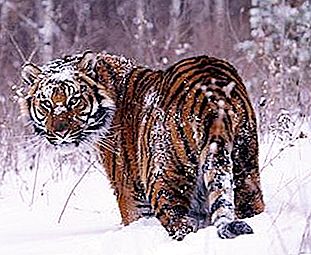The length of Russia from west to east (from the extreme western point - the Kaliningrad enclave to the island of Ratmanov in the Bering Strait) is almost ten thousand kilometers. Our country is rich in geographical records. For example, the length of land borders is 20322 kilometers, sea borders - 38000. There are 11 time zones in the country. The deepest and largest lake in the world (Baikal and the Caspian Sea). True, four more states have access to the Caspian Sea.

The length of Russia from north to south is 4 thousand kilometers. The most extreme northern land point of the country is on the island of Rudolph, which is located in an archipelago called Franz Josef Land. The island received such a name from the Arctic expedition of the Austro-Hungarian Empire, which opened it in 1873. For a long time, the Soviet (then Russian) Arctic station operated on the island, but in 1995 it was mothballed. The southernmost point is the vicinity of Mount Bazardyuzyu in Dagestan, on the border with Azerbaijan.
The considerable length of Russia made it possible for a large number of natural and landscape zones to exist in the country. If in the far north the lifeless Arctic desert dominates, where only in a short polar summer a small number of herbaceous plants appear and quickly bloom, then the southern territories lie in the subtropical zone. This is the Black Sea coast south of Tuapse. Palm trees grow here, and the average minimum of January temperatures has a positive value.

Due to the peculiarities of the country's landscape, a change in climatic zones is also felt when moving from west to east. The length of Russia affects here. The Ural Mountains are not in vain considered the border of Europe and Asia. Moving along the 55th parallel (Moscow latitude) along the M5 federal highway, the difference in natural and climatic conditions is clearly visible. Broad-leaved forests predominate on the western slopes of the Urals: linden, oak, even coniferous (spruce) European species grow here. In the mountain rivers there is a European subspecies of grayling. There are many examples!
Crossing the mountains, we find that the forests become mostly birch, and in the mountains - pine. And linden and oak almost never occur. And the isotherms of both January and July at the same latitude in the European part of the country and beyond the Urals are slightly different.
The entire vast territory of the country borders on three oceans and inland lowland areas of Asia, lying in zones of sharply continental climate. This left its mark on the formation of climate in various regions of the country. Since Russia is very long, the influence of the Pacific Ocean, the largest in the world, on the territory of the country is relatively small. It strongly affects only the climate of the Far East.

In the Far East, seemingly incompatible combined. In the taiga there, next to the traditional Russian bear, a tropical beast tiger is found. True, in the struggle for survival in a harsh climate, he became much larger than his tropical counterpart. And on the cold island of Sakhalin, grapes grow, and wild, and bamboo, although low, up to three, a maximum of up to five meters in height. Interestingly, Vladivostok is located half a degree south of Sochi. And the climatic zones of these cities have nothing in common.
The length of Russia in space is such that the country accommodates territories with diverse environmental conditions. There is no such diversity in any country in the world, with the possible exception of the United States, where Alaska (an analogue of our Chukotka) and Florida and California are “American Sochi”.




